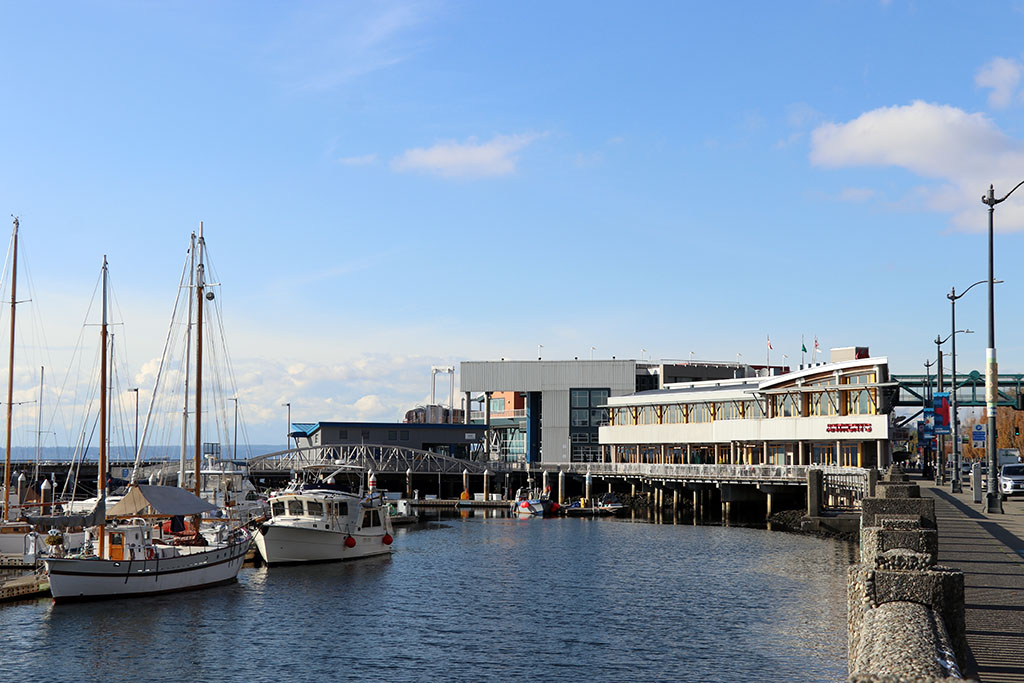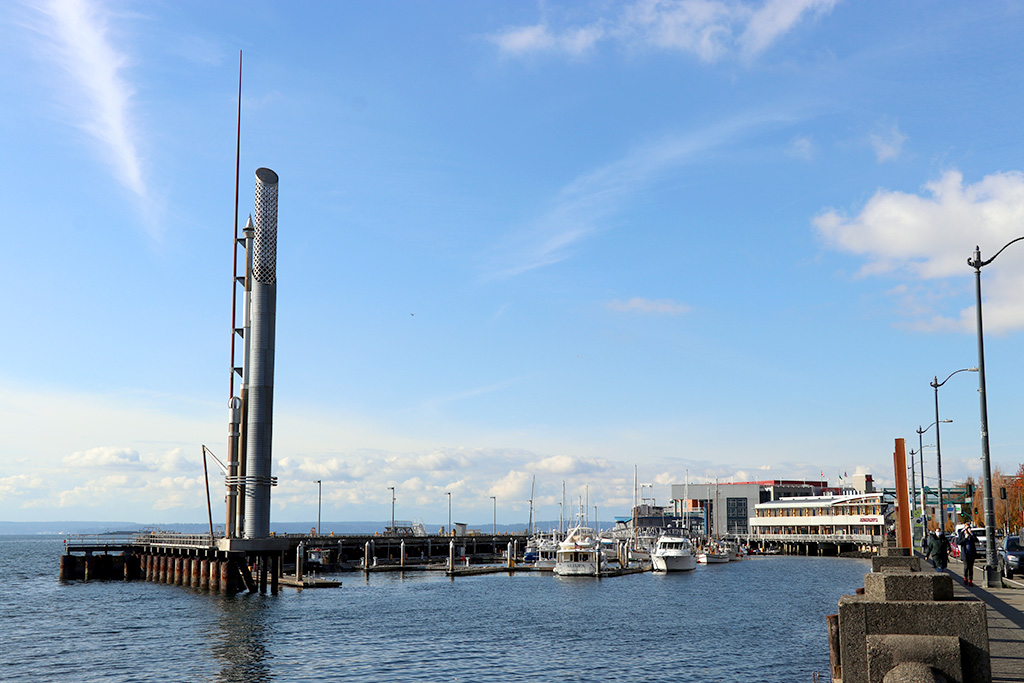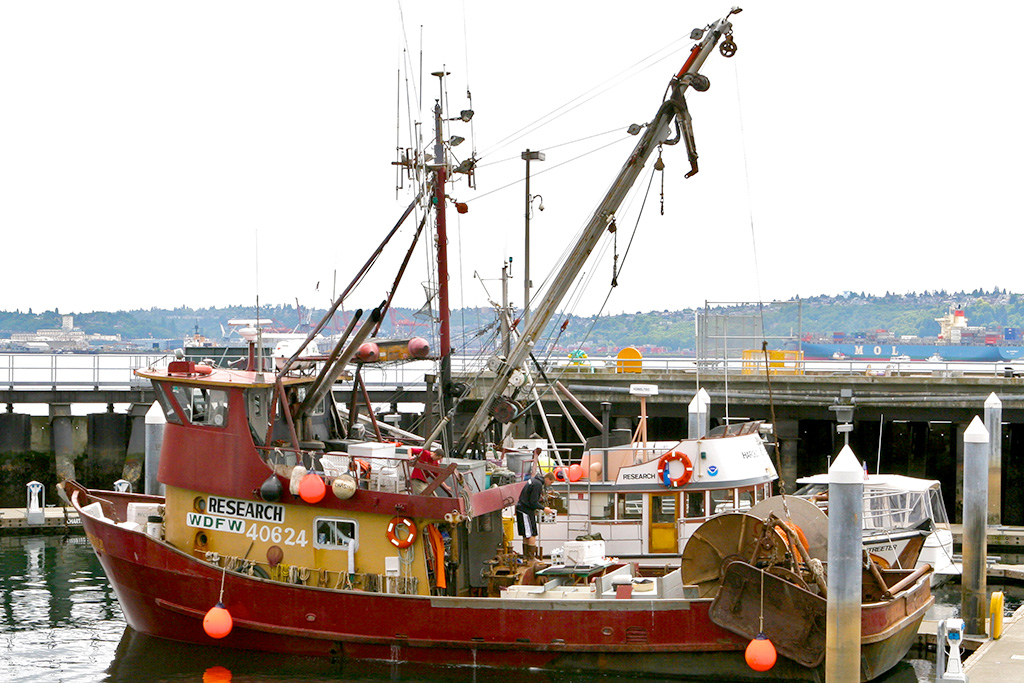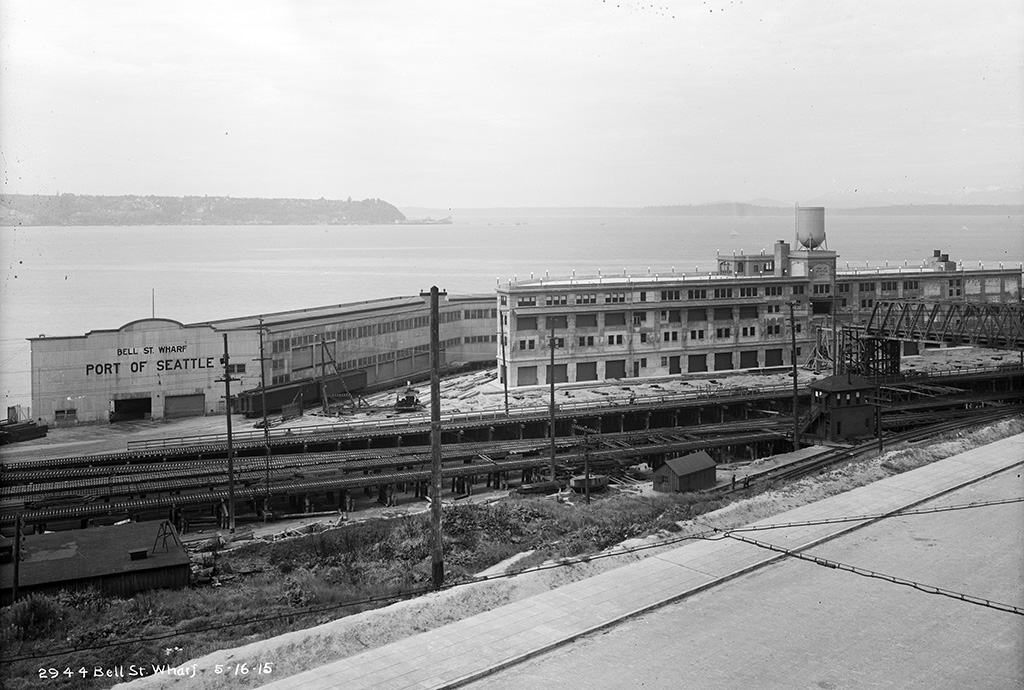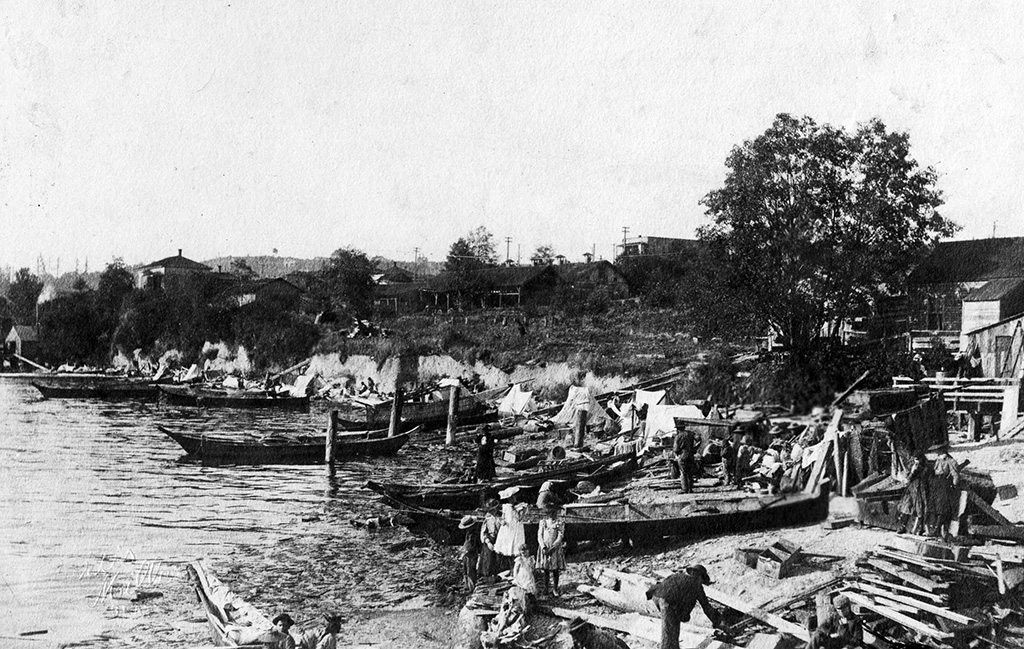-
Bell Street Pier
2225 Alaskan Way
Bell Street Pier
The Port of Seattle was one of the first public port districts in Washington when it was formed by King County voters in 1911. The port districts had the power to levy property taxes to fund infrastructure development on the waterfront. The Port of Seattle’s first project on Elliott Bay was the Bell Street Terminal. The pier featured a two-story wharf, a cold storage plant, warehouse space, and the port’s headquarters. Each story of the wharf had a separate entry. The upper level was reached via a bridge over the railroad tracks, extending out from Bell Street. The lower level was reached via a ramp from Railroad Avenue.
The design of this facility was effective in an era when the cargo was moved by longshoremen. The bags, bales, barrels, and boxes of trade goods, packed to be moved by human power, could be stored on multiple stories in the building. Once shipping containers were adopted in the 1960s, the Bell Street Pier and the waterfront’s other pier sheds were too small-scaled to handle the size of the containers or the volume carried on the newer, larger ships.
As piers fell into disuse, the Port of Seattle gradually bought up land north and south from Pier 66 and in the 1990s began to implement its Central Waterfront Plan. The Bell Street pier and Piers 64 and 65 were redeveloped into a mixed-use pier. Opened in 1996, it featured a 70-slip marina for small boats, a cruise ship terminal, the Odyssey Maritime Discovery Center, restaurants, a rooftop park, and event facilities. Plans originally included space for a fish processing company that had been displaced by the loss of the old pier, but the shift to tourism on the waterfront made processing facilities unworkable on the central waterfront.
Before the hillside up from Pier 66 was regraded, a ravine led up from the Bell Street Pier area to a Duwamish village site, known as BabáqWab (“Little (or Large) Prairie”). When city development pushed Native people out of what would become Belltown, some settled along the shoreline where the World Trade Center and Pier 66 are today. Although those homes would also be displaced by later development, local Native people still maintain connections to this place. At Bell Harbor Marina, Dock T is reserved for tribal fishing vessels during the tribal fishing season.
